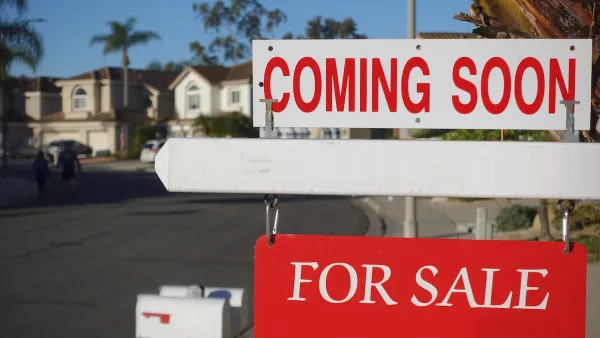A housing market analyst finds that traditional models do a poor job of measuring supply and demand, which makes it very difficult to know how much supply is needed to meet demand.
"Can new build supply be the panacea that many appear to hope?" is the question posed by Neal Hudson in a recent column for the U.K. website Pieria.
To those that would reply unequivocally "yes" to that question, Hudson argues that focusing only on supply relies "on an overly simplistic model of the market."
More specifically Hudson counters policies that track the creation of supply with the rate of projected household formation. Such policies, argues Hudson, do not account for the complexity of the market—neither does projected household formation indicate of demand:
"New build completions are only ~10% of all transactions and so the second hand market is the majority of available housing supply at any given time. More importantly, household projections are not an indicator of housing demand. They are, at best, an indicator of housing need but even then they are flawed."
After describing the factors that determine housing demand (including the factor he believes has the most influence: the cost and availability of credit), Hudson explores potential alternatives for converting housing prices into a target for housing need. Hudson identifies several academic models as promising in that effort, but that also reach a challenging (or troubling) conclusion: "If the academic models are correct then it would appear we need to build substantially more homes than household projections, current ambitions, and housebuilding capacity suggest is possible." Instead of focusing only on supply, Hudson suggests policy makers "also tackle credit supply, taxation, investment incentives and many of the other contributing factors to current high house prices."
FULL STORY: NEW BUILD SUPPLY: A PANACEA?

Analysis: Cybertruck Fatality Rate Far Exceeds That of Ford Pinto
The Tesla Cybertruck was recalled seven times last year.

National Parks Layoffs Will Cause Communities to Lose Billions
Thousands of essential park workers were laid off this week, just before the busy spring break season.

Retro-silient?: America’s First “Eco-burb,” The Woodlands Turns 50
A master-planned community north of Houston offers lessons on green infrastructure and resilient design, but falls short of its founder’s lofty affordability and walkability goals.

Test News Post 1
This is a summary

Analysis: Cybertruck Fatality Rate Far Exceeds That of Ford Pinto
The Tesla Cybertruck was recalled seven times last year.

Test News Headline 46
Test for the image on the front page.
Urban Design for Planners 1: Software Tools
This six-course series explores essential urban design concepts using open source software and equips planners with the tools they need to participate fully in the urban design process.
Planning for Universal Design
Learn the tools for implementing Universal Design in planning regulations.
EMC Planning Group, Inc.
Planetizen
Planetizen
Mpact (formerly Rail~Volution)
Great Falls Development Authority, Inc.
HUDs Office of Policy Development and Research
NYU Wagner Graduate School of Public Service




























